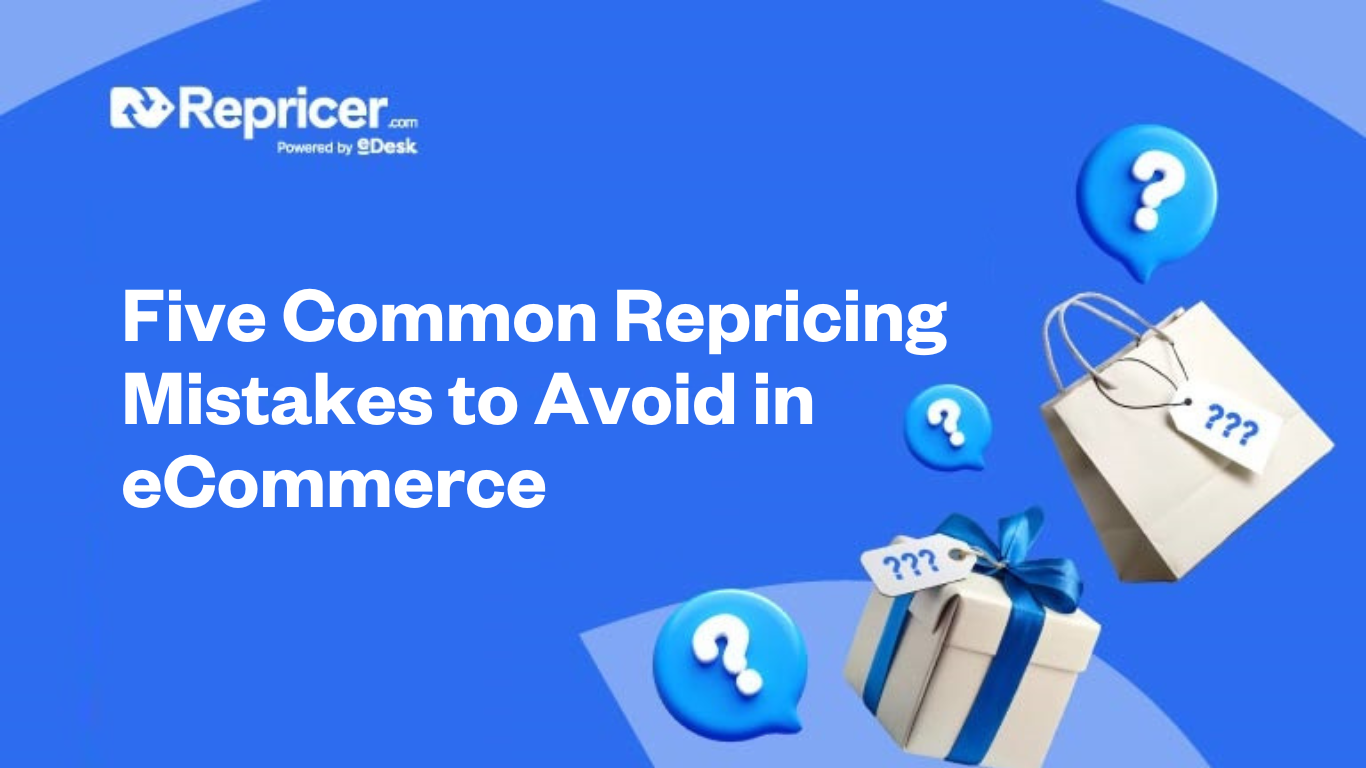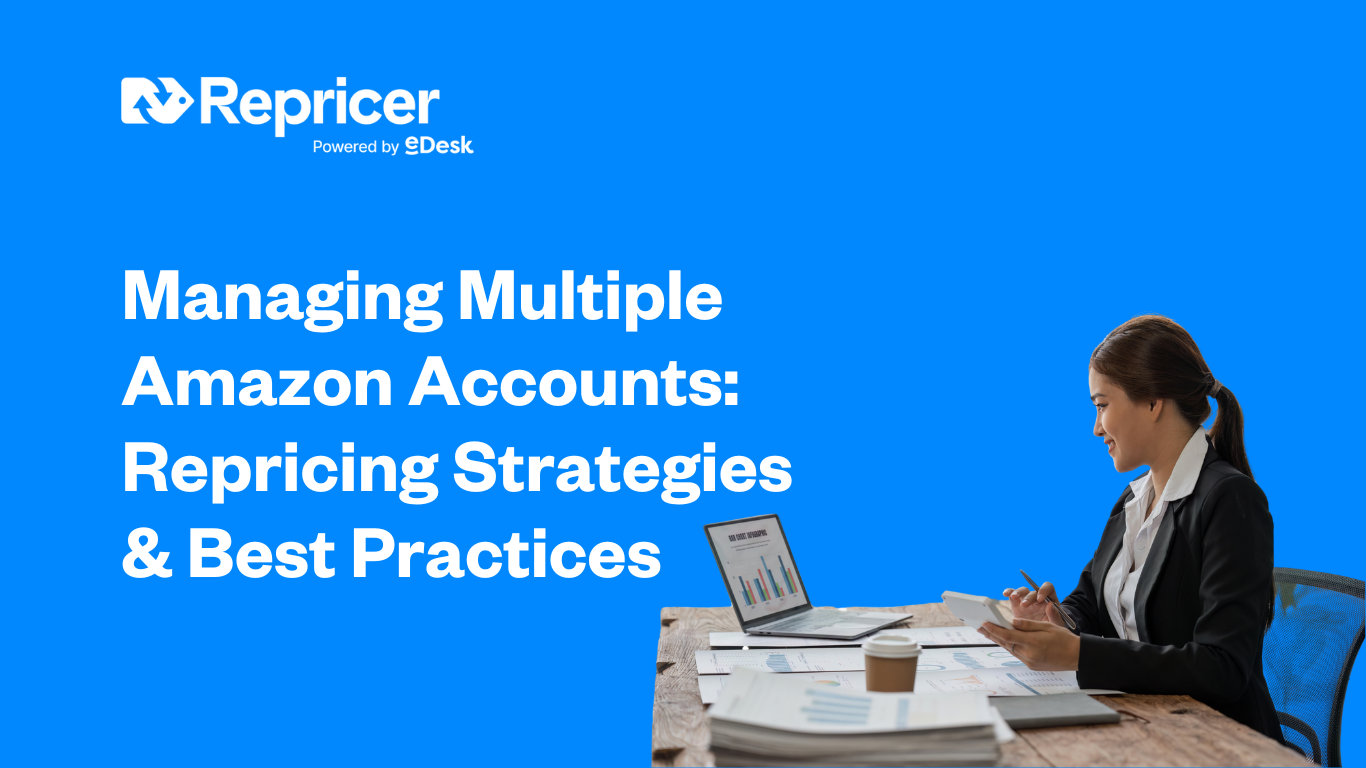In the latest addition to our educational series on repricing, we’re talking common mistakes – and, crucially, how to avoid them. Sellers rely on repricing tools to adjust their product prices in real-time and maintain competitiveness, but without a strategic approach, repricing can lead to costly mistakes.
To help you master the art (which is really straightforward, once you know what’s what) here (in no particular order) are five common repricing mistakes eCommerce sellers should avoid, to optimize pricing strategies and protect their margins.
1. Relying Solely on Automated Repricing Without Oversight
Automated repricing tools can be a game-changer, but relying on them entirely without any human oversight can lead to undesirable results. These tools adjust prices based on algorithms and competitor behavior, but they often lack the nuance of market trends, customer perception, or seasonality that can impact your business.
Mistake to Avoid:
Automating without oversight might result in excessively aggressive price cuts or pricing that doesn’t align with your brand’s value proposition. For example, sellers may find themselves selling at a loss due to overzealous price reductions aimed at staying ahead of competitors.
Solution:
While automation helps speed up price adjustments, regularly review your pricing strategy and make sure your repricer is set up with clear business goals. You should incorporate business-specific rules, such as minimum pricing thresholds and preferred profit margins, to safeguard against undisciplined pricing adjustments.
2. Not Considering All Costs in Your Pricing Strategy
Repricing can often lead to a “race to the bottom” where sellers keep lowering their prices to match competitors, but this strategy overlooks the total costs associated with selling a product. When you focus solely on the competitor price, you may neglect other important factors like shipping, fees, or overheads.
Mistake to Avoid:
Failing to account for these hidden costs can eat into your profits, especially for sellers with thin margins. You might end up with prices that do not cover your cost of goods sold (COGS) or operational expenses.
Solution:
Make sure your repricing tool is programmed to account for all associated costs, including shipping, packaging, marketplace fees, and marketing costs. A solid pricing strategy should factor in profitability, not just competitor prices. It’s essential to include all overheads so that you’re not inadvertently losing money on sales.
3. Not Monitoring Competitor Pricing Patterns
While it’s important to keep an eye on your competitors, it’s a mistake to base your repricing strategy solely on their prices. Some repricing tools are designed to adjust prices automatically based on competitors, but if you’re not monitoring competitor pricing trends over time, you may end up reacting too quickly to temporary price fluctuations.
Mistake to Avoid:
Making impulsive price changes without understanding the broader market trends can lead to frequent pricing shifts, causing confusion among customers and diminishing brand credibility.
Solution:
Monitor your competitors’ pricing strategies over the long term rather than reacting to every small change. Tools like repricers often allow you to set up rules for pricing adjustments that take into account historical trends and price cycles. This approach helps make sure you don’t engage in knee-jerk reactions to temporary shifts that don’t reflect a true competitive
4. Overcomplicating Pricing Rules
Repricing tools often offer a wide range of settings and options, but creating overly complex rules can sometimes hinder the effectiveness of your repricing strategy. Too many rules or intricate parameters might confuse the system and lead to unintended pricing adjustments.
Mistake to Avoid:
Overcomplicating pricing strategies by adding excessive conditions, such as adjusting prices based on certain times of the day or overly detailed competitor rules, can make the repricer’s actions unpredictable.
Solution:
Simplify your repricing rules and make sure they align with your primary business goals. Focus on the key factors such as maintaining a specific profit margin or ensuring that your price remains within an acceptable range above your costs. Keep your strategy flexible but grounded in a few key metrics that directly impact your bottom line.
5. Ignoring Customer Perception and Brand Value
While price is a significant factor in purchasing decisions, it is not the only factor. Lowering prices too much can devalue your brand in the eyes of customers. Many eCommerce businesses make the mistake of focusing only on price, but this can negatively impact their brand perception.
Mistake to Avoid:
Setting prices too low may attract customers who only shop for the cheapest option, potentially diminishing your ability to charge premium prices in the future. Customers who associate your brand with low prices may also question the quality of your products.
Solution:
Focus on value, not just price. You should use repricing as a tool to remain competitive, but not at the expense of your brand image. For example, instead of focusing on becoming the cheapest, make sure you also emphasize product quality, customer service, and unique selling propositions (USPs) in your product listings. Make sure your pricing reflects the perceived value of your product in the eyes of customers.
Ready to elevate your eCommerce sales?
Repricing is a powerful strategy for eCommerce sellers, but it requires careful planning and oversight. Avoid these common mistakes to make sure your repricing strategy is both effective and profitable. By staying mindful of hidden costs, competitor trends, and brand value, you can create a repricing plan that maximizes profits without sacrificing long-term success. Try it for free today.





